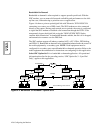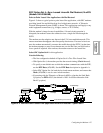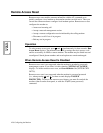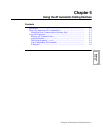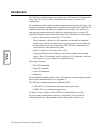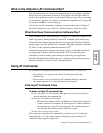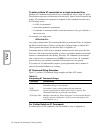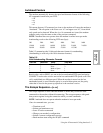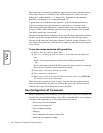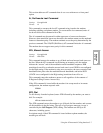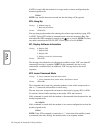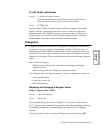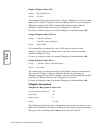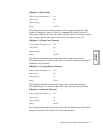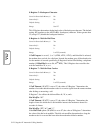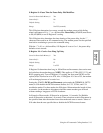
5-6 Using the AT Automatic Calling Interface
Using the
AT ACU
The escape state is entered by sending the escape character three consecutive times.
The escape character is selectable as any ASCII character. Its value is stored in
S-Register 2, and the default is “+” (decimal 43). To disable escape command
detection, set S-Register 2 to a value greater than 127.
A guard time is used with the escape sequence. A guard time must precede and
follow the sequence of escape characters to prevent the +++ characters from
inadvertently placing the modem into command mode if they are transmitted in a
message. If data is sent within the guard time, the escape sequence is not detected.
The default guard time is one second.
The guard time specified by S-Register 12 also specifies the maximum time between
the three consecutive escape characters. If more than the allowable time elapses
between escape characters, the escape sequence is ignored. Setting S-Register 12 to
zero disables the guard time, so that the rate at which you enter the escape sequence
is not a factor.
To use the escape sequence with guard time:
1) Pause a bit longer than the guard time.
2) Send +++, ensuring the delay between +’s is less than the specified guard
time.
When a valid escape sequence is detected, the modem responds with
OK
Do not send commands until the OK response has been received. A command
that is sent too soon may not be interpreted correctly.
3) Pause again, a bit longer than the guard time.
4) Enter commands to the modem.
5) When you are ready to resume the call to the remote system, type ATO<CR>.
The modem returns to the online state.
When using error correction, if you “escape” from the data state to the command
state, the modem buffers any data received from the remote site. When you return
online (to data state), the buffered data is sent to the DTE.
Non-Configuration AT Commands
Most AT commands cross-reference to a front panel option. Some AT commands are
intended only for immediate modem action. These commands allow you to perform
a number of the important day-to-day modem functions, such as:
• Re-execute your last command
• Answer an incoming call
• Dial a telephone number
• Hang up
• Exit command mode, return to data mode
• Redial the last telephone number



